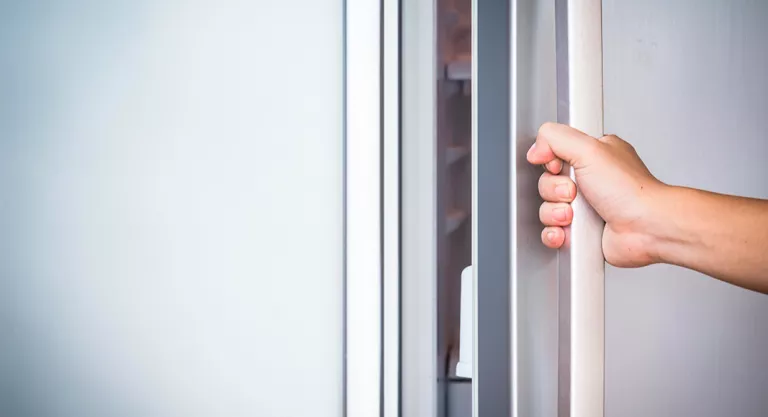When we hear thunder in a storm, we feel a thrill. And the same thing happens when we stand on the edge of a cliff. Or we listen to the organ in a cathedral. We feel melancholy, fright, sorrow… Sensations that we do not know how to explain…, or maybe we do. Some scientists believe that behind these perceptions there are sounds that we do not hear, but our body does capture: infrasound, also known as black noise.
What is infrasound or black noise and how does it affect our health?
Infrasounds are acoustic waves whose frequency is less than 20 hertz. They are sounds that we do not hear, since our ears perceive approximately frequencies between 20 Hz and 20 kHz. There are people who can perceive them fleetingly as a hiss or a buzz, which has nothing to do with, for example, the dull sound of the refrigerator motor or the fine beep that computers make. But, even if we don’t hear that black noise, it has consequences on our health.
“Black noise affects our health,” says David Baeza Moyano, adjunct professor of the Degree in Optics and Optometry and expert in photobiology, at CEU San Pablo University. It is true that with infrasound our ears do not hurt, as it would happen if we were less than 25 m from the takeoff of an airplane. As we have mentioned, they are not heard, so our auditory organs do not feel them, as would happen if we were in the middle of a mascletá, which exceeds 120 dB. But they are absorbed by our body. Those inaudible sounds are acoustic waves. “When we put our hand on the refrigerator door, even when the motor doesn’t sound, we notice a tremor. And that vibration reaches the ground”, says David Baeza. And through the air and the floor they are absorbed by our entire body.

“The frequencies of the infrasound waves coincide with the resonance frequencies of our internal organs, that is, with the maximum degree of oscillation of our cells”, he adds. Therefore, when our body absorbs these infrasonic wave frequencies, the cells of our heart, our lungs and the neurons of our spinal cord and brain vibrate.
That oscillation then “becomes heat and our body then considers it as something harmful, like fever.” And what does our immune system do when there is a rise in temperature? Defend yourself, always. “Catecholamines (a type of hormone) are triggered and, therefore, stress,” says Baeza Moyano.
And to warn us that something is not right, in addition, in very extreme cases, it sends us signals that make us feel bad, such as:
The so-called Havana syndrome, as some rare attacks against US diplomats are known that caused, among other things, brain damage, has been related to infrasound. There was speculation that another country “had developed an infrasound weapon, but it is currently not known what exactly is causing these symptoms,” says David Baeza.
Where do black noise emissions come from?
Currently, these infrasounds usually come from household appliances, such as refrigeration and ventilation equipment in shops, machines, wind turbines… The wheel bearings of vehicles, especially tractors, buses and trucks, generate infrasound. In fact, drivers are the ones who suffer the most, although it seems that these imperceptible oscillations also reach homes near roads, highways or motorways. “When you drive for hours you feel irritated and you don’t know why. The answer is the absorption of the vibration of the car”, affirms the expert.
Infrasounds are not heard, so our ears do not feel them, but our body absorbs their sound waves
However, infrasound has always been with us, even in pre-industrial times. That feeling of despondency and sadness that invades us in areas where there are cliffs and lighthouses, or in forests, could be nothing more than the whistle of infrasound waves. “Thunder also emits these waves along with audible noise. That is why one feels like a spasm or a slight lung contraction, or even like a start of the heart”, says Baeza. Volcanoes or earthquakes also generate these infrasound vibrations, which today the inhabitants of La Palma perceive unconsciously.
Ghosts, spirituality and sensations associated with infrasound
But there are more examples of how black noise surrounds us and makes us see what is not there. The scientist Vic Tandy and his collaborators “when they were in an area of his laboratory they felt cold, as if something was going through them. One night he saw a figure out of the corner of his eye, as if someone was staring at him, they heard muffled footsteps,” David Baeza tells us. Ghosts, perhaps? No, like all scientists, his mind was not given to believe in paranormal events and he thought they could be infrasound.
With a measuring device, he detected that in one area, due to the vibration of the machines, there were infrasound waves of about 7 Hz. “These waves are absorbed by the optic nerve and vibrate, giving rise to synaptic transmission to the brain. But the information that arrives through the optic nerve does not correspond to what the photosensitive cells of the retina detect and take to the visual cortex. There is no transmission of a real image, so people have the sensation of a spot or nebula moving around them. That is to say… ghosts”, clarifies David Baeza.

When someone, whether they are a believer or not, enters a church and listens to the music emitted by the organ, they perceive sensations that they attribute to the spirituality of the environment, but is it not infrasound? “The long tubes of the organs have the ability to emit infrasound waves together with the audible sound,” says the expert. Sarah Angliss, a specialist in music and electroacoustics, designed a 7 m tube that allowed frequencies of about 17 Hz to be emitted. She tested the tube in a concert hall with an audience of 750 guests. At the end of the recital they were asked to describe what they had felt. 22% said they had chills down their spine, sensations in their stomachs, increased heart rate. Others affirmed that it caused a feeling of nostalgia, sorrow and sadness, or even the memory of a loved one who had already passed away.
How can we defend ourselves against black noise?
The problem is that it is not easy to defend ourselves from these sounds, precisely because we do not hear them and we do not know that they are there. “If we hear a very loud noise our ears hurt and we move away, but we are not prepared for infrasound. Only your body tells you: here is something that I don’t know what it is, but it is toxic”, says Professor David Baeza. That is why the helmets that are sold to avoid infrasound are useless.
And the law says nothing about it. Neither in our country, nor in others. “In Europe only audible sound has been legislated and partially on ultrasound. There are two directives in force regarding the limits of permissible audible noise, one for workstations and the other for our surroundings”, says David Baeza.
What to do so that black noise does not reach our body? David Baeza gives us the following tips to avoid the effect of black noise:
-

Live away from roads and highways. “Future houses would have to be built at a safe distance from highways and bridges where trucks pass, since vibration is accentuated here,” she specifies. One solution would be to create artificial hills that separate the driveways from the houses. “I think it’s the only way because the vibration eats up that land before it reaches the houses.”
-

Pay attention to the location of the rest areas of the houses. “It is necessary to avoid that the rooms on the first floor of a building coincide with the areas where refrigeration equipment is installed in the commercial basement,” he points out. Also, don’t choose rooms that are directly below, above or next to the air conditioners as sleeping rooms. “If these units go up to the roof, the neighbor on the top floor receives all the vibration,” he adds.
.














